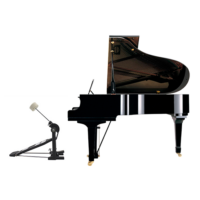Interpreting radical 20th-century music often significantly differs from interpreting pre-20th-century music for several reasons, among them the following three:
1. Notation: Pre-20th-century music often features less detailed notation, requiring musicians to fill in the gaps as part of their interpretation. In contrast, 20th-century scores, particularly those influenced by the Viennese School, are much more precise, leaving mainly micro-expressions to the discretion of the musician.
2. Artistic Intentions: For pre-20th-century music, our knowledge of composers’ intentions is often limited. However, the increasing academization of classical music in the 20th century has led to numerous articles and interviews in which composers explicitly state their artistic intentions, providing clearer guidance for musicians.
3. Performance References: There are no recordings of pre-20th-century music authorized by the composers. In contrast, recordings of 20th-century pieces often involve composers participating in the recording or rehearsals, creating strong performance references.
Thus, while 20th-century classical music builds on the foundations of traditional classical music, its basis for interpretation is often quite different. Detailed scores, clear knowledge of the artistic intentions, and the participation of the composers in recordings of their music transform the interpretation of some 20th-century music into an almost different discipline compared to traditional classical music. This difference is further emphasized by 20th-century ideologies like Stravinsky’s and the concept of Werktreue, which stress precise execution over personal interpretation.
Given these changes, what could be the role of the musician in this type of 20th-century music? Obviously, there are different answers to this question, depending on the specific pieces in question. For some music, like e.g. that of Boulez, Lachenmann, and Reich, an important part of using musicians could be to humanize the score, focusing on execution rather than emotional or intellectual interpretation. This could be described as filtering the music through the musician, rather than adding an interpretation to the music, with the challenge of achieving perfection as a human blueprint on top of the music. A virtuosos of this type of 20th-century music often excel in continuous stamina, surprising delicate timbral control, and “impossible” complexity.
A counterculture to this, might be found within composers as diverse as Morton Feldman, Iannis Xenakis, and Toru Takemitsu, who emphasizes performer freedom and interpretative openness.
Through different strategies like graphic notation, where precise pitch or rhythm are left to the performer’s discretion, co-creation, where the performer makes decisions on a more compositional level (such as form or instrumentation), or by encouraging traditional expressiveness, musicians are required to bring their own interpretive choices to the forefront.
For these composers, the performance is an integral part of the work. Their music often necessitates a deep engagement with the score’s underlying ideas, allowing musicians to bring their own artistic vision to the performance.
In the context of Feldman, Xenakis, and Takemitsu, virtuosity is not merely about technical prowess but also about the ability to make creative decisions within the parameters set by the composer and shape the music in real time. This redefined virtuosity values subtlety, listening, the ability to respond to the moment, and active participation in the creation of the musical experience.
Example: Charlotte Norholt and Søren Rastogi’s interpretation of Lior Navok’s The Hawk’s Glide and At the Bat’s Dwelling (2003)
A more creative approach can also be extended to works originally conceived within a more traditional thinking and notation. In Charlotte Norholt and Søren Rastogi’s interpretation of Lior Navok’s The Hawk’s Glide and At the Bat’s Dwelling (2003), they add a series of changes that both enhance elements of the work and create a more personal engaging performance:
The fortissimo chord in the opening of the piece, is used as a shock break from the preceding piece of the concert, and in it’s resonance, Charlotte Norholt moves toward the end of the grand piano. the purpose of this is to bring the two instruments into a more equal relationship regarding both sound an performance than the traditional “flute soloist with piano accompaniment” setup.
In this position the flute can appear out of the piano’s resonance or disappear into it becoming almost inaudible.
In order to emphasize the cave associations of the title the entire introduction of At the Bat’s Dwelling, is played without changing the pedal, allowing the series of sound clouds moving in and out of each other.
And finally to enhance the core idea of this section, we priorities the imitations as a whole, rather than precisely rendering the complex rhythmic notation.
